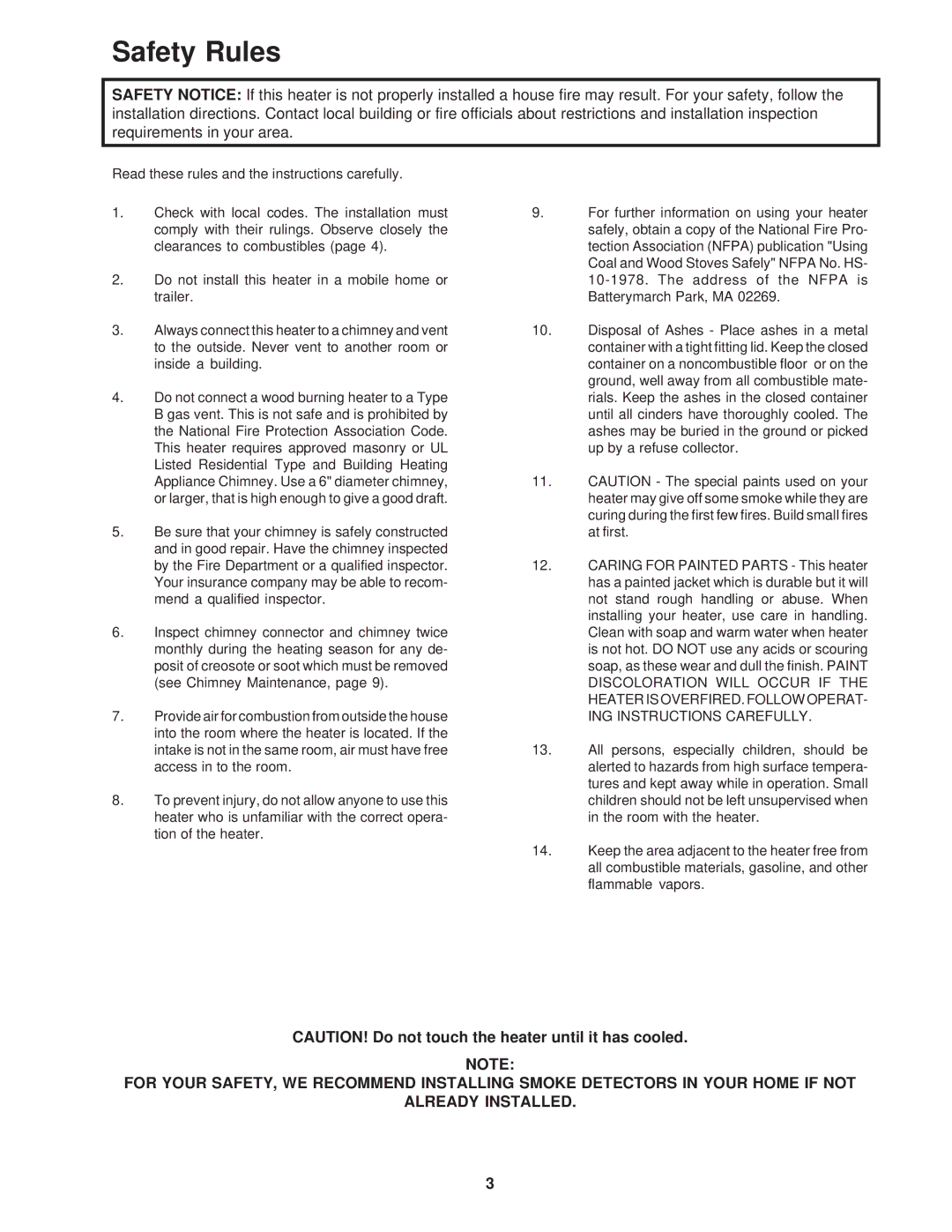1261 specifications
The United States Stove Company 1261 is a striking and efficient wood-burning stove designed to provide warmth and comfort to homes while embracing classic craftsmanship. This stove has been a favorite among homeowners and outdoor enthusiasts alike, offering a blend of traditional style and modern performance.One of the standout features of the 1261 is its high efficiency. With a maximum output of 77,000 BTUs, this stove can heat spaces of up to 2,000 square feet, making it an ideal choice for both small and large rooms. The efficient design allows for longer burn times, reducing the need for frequent refueling. This not only enhances convenience but also contributes to a more sustainable heating method.
The 1261 utilizes advanced combustion technology, including an air wash system that keeps the glass door clean. This feature is particularly appreciated by users because it maintains a clear view of the mesmerizing flames without requiring constant cleaning. Additionally, the secondary combustion system maximizes efficiency by burning off gases and particulates that would otherwise escape unburned, thus providing more heat and reducing emissions.
Constructed from heavy-duty steel, the United States Stove 1261 boasts durability and longevity. The robust build ensures that the stove can withstand high temperatures while maintaining its structural integrity. Furthermore, the cast iron door not only adds to the stove’s classic aesthetic but also provides optimal airflow control, allowing users to adjust the heat output with precision.
The stove comes equipped with a variety of features aimed at maximizing user experience. An easy-to-use draft control allows for simple adjustments, ensuring that the fire burns at the desired intensity. The large firebox is designed to accommodate larger logs, promoting longer burn times and reducing the frequency of loading.
In terms of design, the United States Stove 1261 features a traditional look that can complement various home decors. Its compact size allows for versatile placement within any room, whether in a rustic cabin or a modern home. With its combination of efficiency, durability, and classic design, the United States Stove 1261 is a reliable choice for those seeking an effective heating solution. It stands as a testament to the craftsmanship and innovation that the United States Stove Company is known for, making it a great addition to any household.

